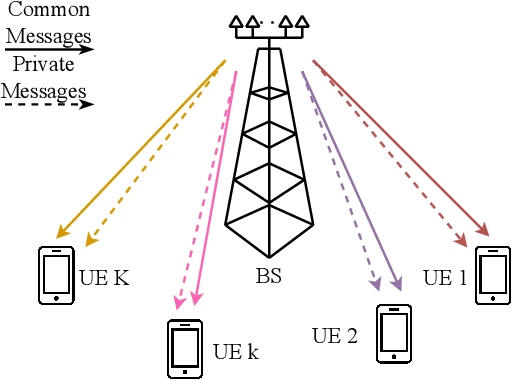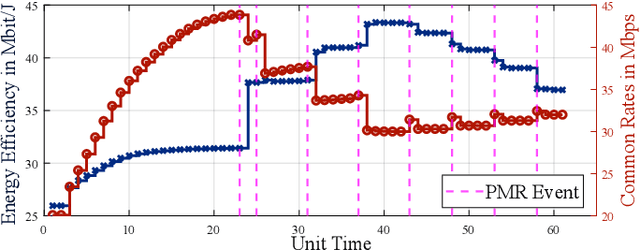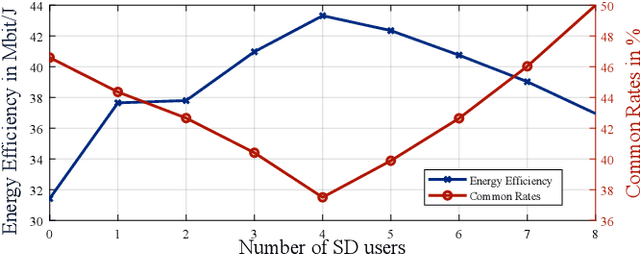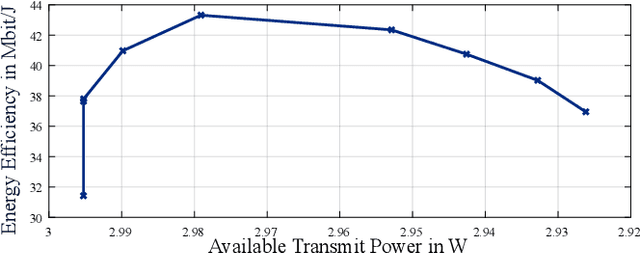Optimizing Energy Efficiency with RSMA: Balancing Low and High QoS Requirements
Paper and Code
Oct 08, 2024



Future wireless systems are expected to deliver significantly higher quality-of-service (QoS) albeit with fewer energy resources for diverse, already existing and also novel wireless applications. The optimal resource allocation for a system in this regard could be investigated by reducing the overall power available at the expense of reduced QoS for the inefficient users. In other words, we maximize the system energy efficiency by achieving power saving through a minimal back-off in terms of QoS. In this paper, we investigate the energy efficiency vs. delivered QoS trade-off for the rate-splitting multiple access (RSMA) assisted downlink system. We first determine the user grouping with a normalised channel similarity metric so as to allow a large number of users with non-zero achievable private message rates. Through the private message removal (PMR) of these users, we aim to investigate the QoS vs. energy efficiency trade-off. Numerical results indicate a peak of ~$10\%$ increase in the network energy efficiency for the proposed normalised channel similarity metric based user grouping with scheduled PMR.
 Add to Chrome
Add to Chrome Add to Firefox
Add to Firefox Add to Edge
Add to Edge